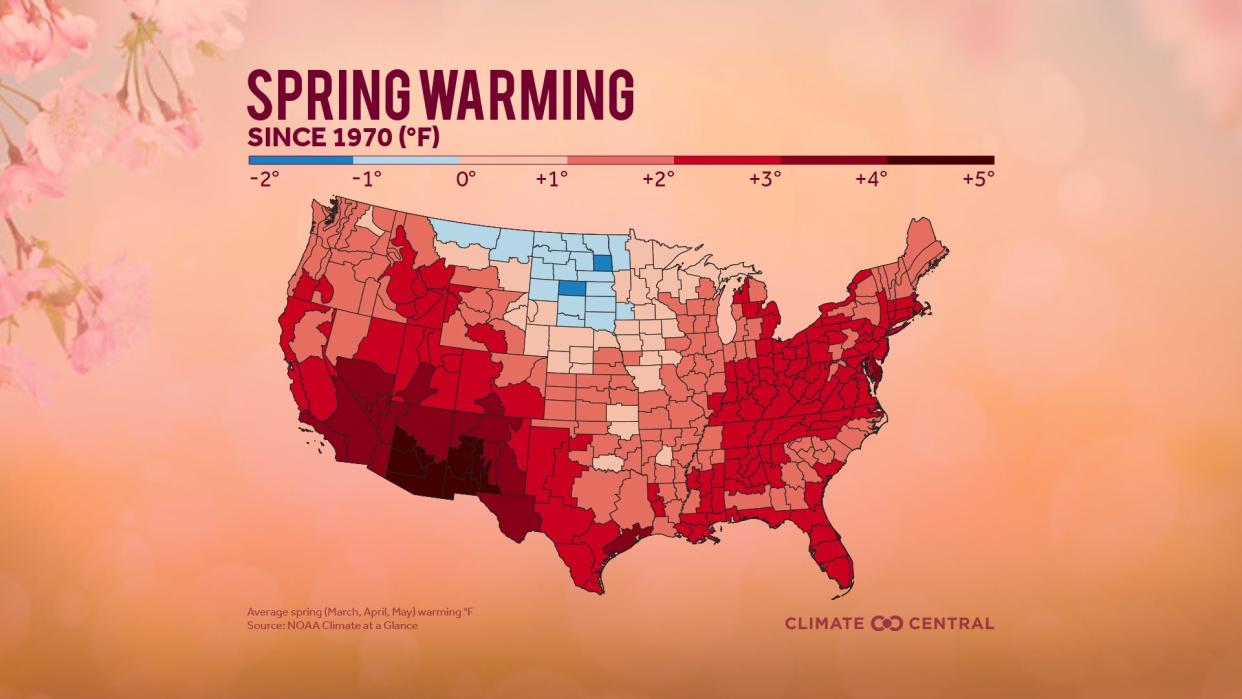National Weather Observers Day: Climate change makes tracking weather tricky, experts say

Extreme weather events like record-breaking heat waves and rainfall are a few of the many symptoms of climate change. National Weather Observers Day offers a look at how experts have adapted.
“Climate change has made it trickier to better forecast and capture extreme weather events,” said Bill Murphey, state climatologist for Georgia Environmental Protection Division. “Extreme weather events such as localized flash flooding, rapid intensification of tropical cyclones, droughts, wildfire activity and transport of smoke, which is a climate causing health concern.”
May 4 is National Weather Observers Day, a day dedicated to learning about weather phenomena, meteorological instruments and the history of weather tracking.
Murphey said meteorological instruments and technology have evolved over the years.
“If you look back historically, even before the 1920s, Aristotle had a book called the Meteorologica,” said Murphey. “In the 1920s, air mass and weather fronts became known in Norway. That's when the concepts of air masses and weather fronts were formulated. The 1940s is when we started really getting a better handle on things.

“We had upper air observations in 1940. That's essentially what the weather service still does today. They take radiosonde observations twice a day. Once in the morning and again in the afternoon.”
The radiosonde a small instrument weighing 60 to 80 grams, is attached below a large balloon inflated with hydrogen or helium gas. As the radiosonde rises, sensors on the radiosonde transmit pressure, temperature, relative humidity and GPS position data each second, according to experts with the National Weather Service.
These sensors are linked to a battery powered radio transmitter that sends the sensor measurements to a ground tracking antenna on a radio frequency typically ranging from 400 to 405.9 MHz. Wind speed and direction are also obtained by tracking the position of the radiosonde in flight using GPS or a radio direction finding antenna.
“In 1950 we had numerical models and weather predictions that came out and really helped out in forecasting atmospheric systems, basically bringing software into the picture,” Murphey said. “Which can handle equations of motion.”
Murphey said the tools of the trade really came into play in the 1960s.
“The 1960s was when weather satellites, remote sensing and then continuing atmospheric sounding measurements came into play,” he said. “With satellites coming into play in the 1960s, that really helped with forecasts of weather, weather systems, things like mid latitude cyclones and winter weather events.”
Murphey said the 1990s was the year of accuracy.
“In 1990 we had a Weather Radar NEXRAD system and ASOS − Automated Surface Observing Systems," he said. “This gives us a handle on surface observations. That's been a big help in trying to improve accuracy in forecasting.”
As human-caused global warming increases, climate change is projected to affect extreme weather in the future, experts say.
Going nuclear: Plant Vogtle Unit 4 nuclear reactor enters commercial operation, says Georgia Power
“Meteorology has evolved over the years,” said Murphey. “One of the big concerns is the sea level rising from global warming caused by climate change. With satellites we have a better handle on sea ice extent, and sea ice coverage and things like that.”
Leonard Vaughan, senior service hydrologist and meteorologist with the National Weather Service in Columbia, South Carolina says he’s seen a lot of changes including weather hobbyists.
“Some people do storm chasing as a hobby and some people do it as a business,” said Vaughan. “Some people will travel to get video of whatever's going on, like a tornado, hurricane or flooding and they often reach out to the National Weather Service.”
Nolan Doesken, co-founder of Community Collaborative Rain, Hail and Snow Network said the National Weather Service has utilized volunteers since the late 1800s.
“The volunteer network is called the Cooperative Observer Program,” said Doesken. “Citizens have been collecting data using official instrumentation provided by the old US Weather Bureau which later became the National Weather Service.”
The National Weather Service Cooperative Observer Program is a network of daily weather observations taken by more than 8,500 volunteers. The data is vital to understanding the U.S. climate while providing near real-time information that supports forecasts and warnings.
“This program is truly vital to understanding our nation's climate,” said Doesken.
This reporting content is supported by a partnership with several funders and Journalism Funding Funding Partners.
Erica Van Buren is the climate change reporter for The Augusta Chronicle, part of the USA TODAY Network. Connect with her at EVanBuren@gannett.com or on X: @EricaVanBuren32.
This article originally appeared on Augusta Chronicle: National Weather Observers Day dedicated to all things weather related

